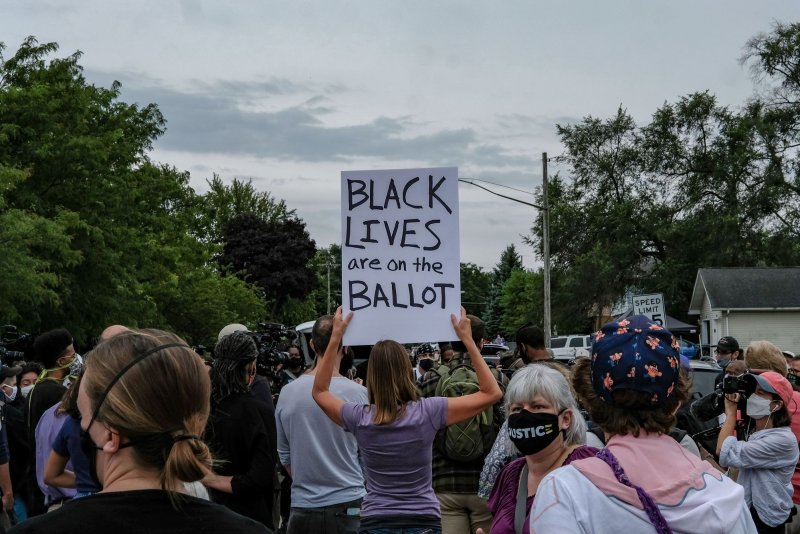
A new individual bio-containment unit can protect healthcare workers lacking PPE from COVID-19 infection, a new study has found. Photo courtesy of the University of Pittsburgh Medical Center
Sept. 3 (UPI) -- A new individual bio-containment unit designed to protect healthcare workers from COVID-19 blocks 99.99% of the airborne respiratory droplets that spread the virus, a study published Thursday by the journal Annals of Emergency Medicine found.
The unit is intended for use at facilities with coronavirus patients, particularly those in which personal protective equipment, or PPE, is in short supply, according to the researchers from the University of Pittsburgh Medical Center and the U.S. Army Combat Capabilities Development Command's Army Research Laboratory, who developed it.
Intubation involves inserting a breathing tube down a patient's throat, and places doctors and nurses at risk for infection as viral particles are released into the air during the process, they said.
RELATED CDC: Nearly 30% of health workers with COVID-19 didn't know they had it
"The ability to isolate COVID-19 patients at the bedside is key to stopping viral spread in medical facilities and onboard military ships and aircraft," Cameron Good, a research scientist at the Army Research Laboratory, said in a statement.
Earlier attempts to minimize exposure to healthcare workers involved placing a plexiglass intubation box over a patient's head and shoulders, according to Good and his colleagues.
However, the device wasn't able to keep aerosol droplets from leaking out and exposing caregivers to the virus, they said.
Because of concerns about the potential of airborne viruses to leak from the plexiglass boxes, the U.S. Food and Drug Administration recently revoked its Emergency Use Authorization for these enclosures.
The individual bio-containment unit is designed to suck contaminated air out of the box with a vacuum and trap infectious particles in a filter before they seep into the room.
RELATED Study: COVID-19 risk 3 times higher for front-line health workers
For this study, researchers used a simulated patient -- a mannequin placed inside the unit -- and piped in an oil-based aerosol, which formed tiny droplets in the air, similar in size to the virus particles in breath that spread COVID-19, the researchers said.
The unit trapped more than 99.99% of the simulated virus-sized particles and prevented them from escaping into the environment, they said.
In contrast, outside of the passive intubation box, maximum aerosol concentrations were observed to be more than three times higher than inside the box, the simulation showed.
In addition to protecting providers during intubation, the unit also can provide negative pressure isolation of awake COVID-19 patients, supplying an alternative to scarce negative pressure hospital isolation rooms, as well as helping isolate patients on military vessels, the researchers said.
"Having a form of protection that doesn't work is more dangerous than not having anything, because it could create a false sense of security," said co-author David Turer, a plastic surgeon who recently completed his residency at the University of Pittsburgh and now is at the University of Texas Southwestern Medical Center.
Turer and colleagues submitted an emergency use authorization application for the individual bio-containment unit to the FDA several months ago, and they are preparing to manufacture the devices for distribution.
If the agency grants the authorization, hospitals and military units will be able to use the device to protect healthcare workers caring for COVID-19 patients.
"It intentionally incorporates parts from outside the medical world," Turer said. "So, unlike other forms of PPE, demand is unlikely to outstrip supply during COVID-19 surge periods."













